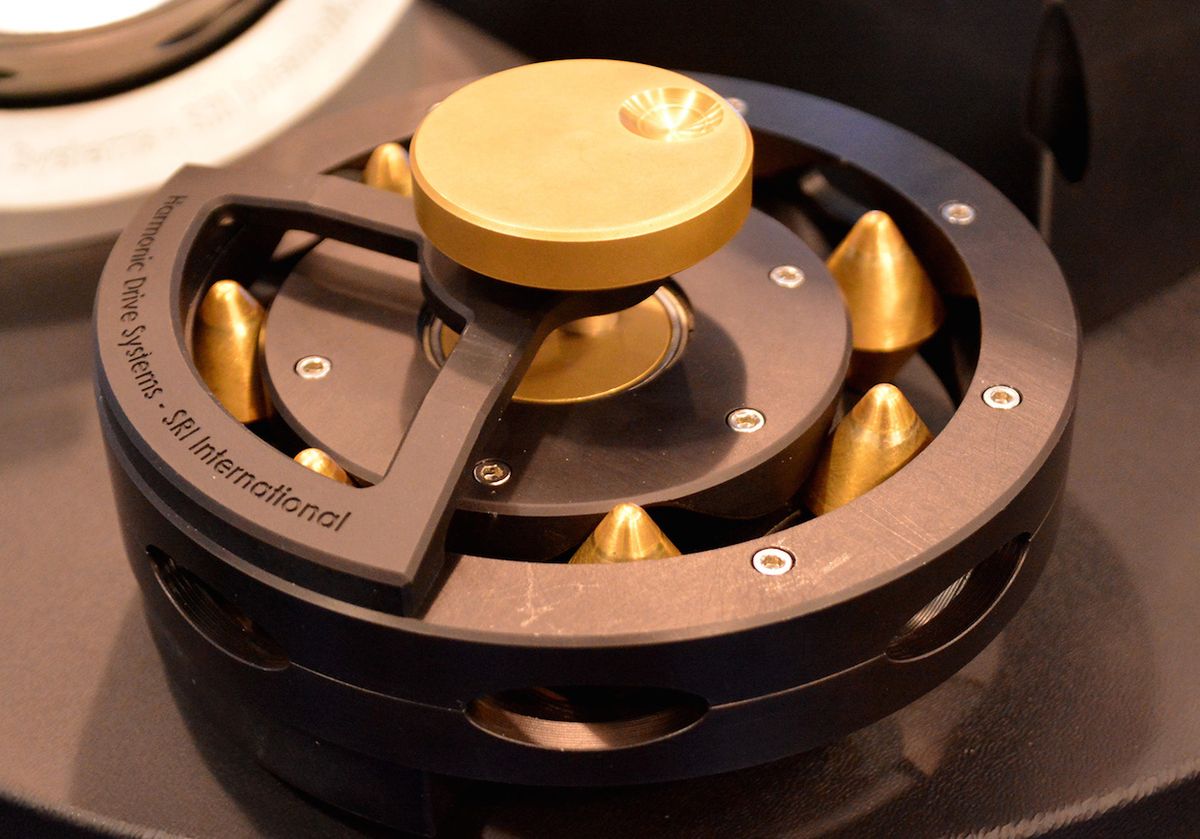I know, it doesn’t seem like there’s any possible way that a transmission system could be interesting enough that we’d dedicate an entire article (and video!) to it. But here we are: As soon as SRI explained how their new Abacus transmission worked, we were absolutely sure that it was cool enough to share. In a nutshell, here’s why: It’s the first new rotary transmission design since Harmonic Drive introduced its revolutionary gear system in the 1960s*, and it might give harmonic gears a literal run for their money.
The physics of most electric motors generally dictates that the motors are happiest when they’re spinning very fast. Unless you want to use them to simply spin a thing very fast, you’ll need to add a rotary transmission that can convert low torque, high speed rotation into higher torque, lower speed rotation. If you’ve got the budget, the way to do this is with a high-performance harmonic gear like the ones offered by Harmonic Drive. Roboticists like harmonic gears because they are compact, have high gear ratios, and, perhaps most important, don’t have backlash, which is essentially the amount of wiggle room that you get with conventional gear-based transmissions. In robotic applications, wiggling means that you don’t know exactly where everything is all the time, making precision tasks something between irritating and impossible.
Harmonic gears are great, but they’re also superduper expensive, because they require all kinds of precision machining. Alexander Kernbaum, a senior research engineer at SRI International, has come up with an entirely new rotary transmission called the Abacus drive, and it’s a beautiful piece of clever engineering that offers all kinds of substantial advantages:
The Abacus drive (named because it has components that look like the beads of an abacus) is what’s called a pure rolling transmission: There are no parts that rub or slide against each other (like gear teeth), only parts rolling against other parts. Rubbing and sliding result in wasted energy, and in fact, conventional transmissions are typically only 50 percent efficient. Kernbaum says that Abacus has an efficiency “in the high 90s,” a massive improvement. The beads you see in the drive are rolling in and out of a groove with a diameter that varies. This causes the beads to effectively change their diameters depending on where in the groove they are, resulting in a cycloidal motion similar to what you see in Harmonic Drive gears.
“We 3D printed the very first Abacus drive in order to figure out if it worked,” Kernbaum told us. He could see, just by visually tracking how the parts moved, that the design had a pure rolling motion. “But it took me almost an year to really get the math right to prove that,” he adds. The Abacus drive also has low backlash, very low backdriving torque, and promises to be significantly lower cost than a harmonic or similar strain wave gear system, because it’s easier to manufacture.
This all might seem like it would be worrying for Harmonic Drive, the principle manufacturer of Harmonic Drive gears, but it’s not, because Harmonic Drive is a partner in the project. It has licensed the Abacus design from SRI and is collaborating with them to commercialize it. “We’re in the process of doing lifetime testing right now, and we expect to have beta version drives within the year,” Kernbaum says. “After that, we’ll be rolling out our first product line.”
* Harmonic Drive gears are based on an ingenious mechanism known as a strain wave gear, which was invented in 1955 by a prolific engineer named C. Walton Musser (his other numerous inventions include the recoilless rifle and the ejection seat). In the 1960s, Musser partnered with a company called United Shoe Machinery Co. (USM) in Beverly, Mass., where they worked together to manufacture the new gear, later setting up Harmonic Drive as a division of USM. Today, after a series of mergers and acquisitions, the Harmonic Drive Group consists of three companies based in the United States, Japan, and Germany.
Evan Ackerman is a senior editor at IEEE Spectrum. Since 2007, he has written over 6,000 articles on robotics and technology. He has a degree in Martian geology and is excellent at playing bagpipes.



